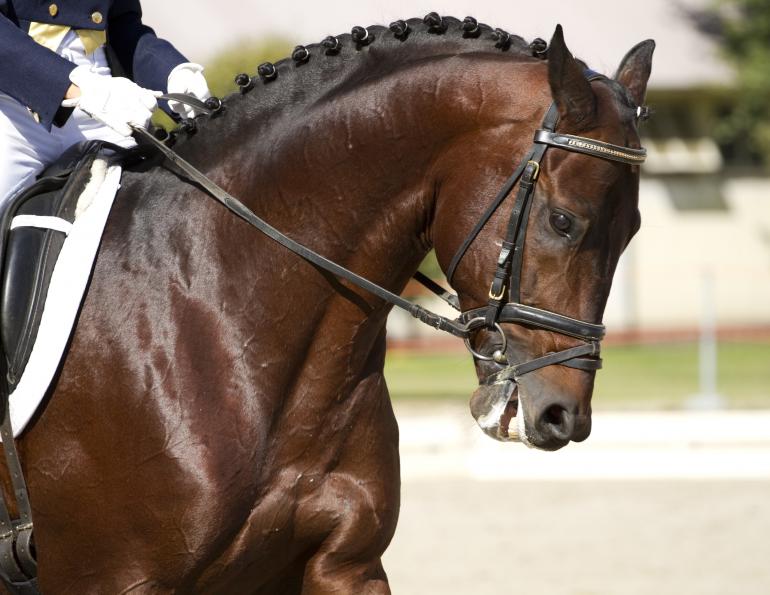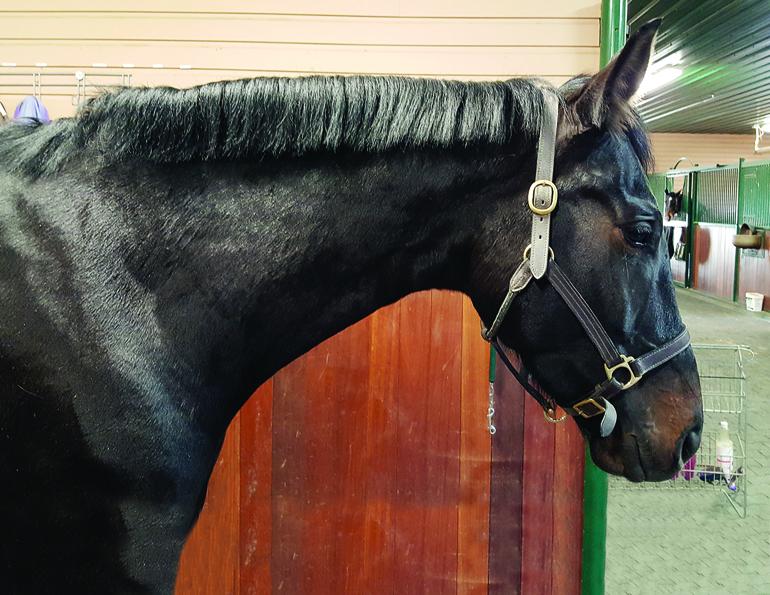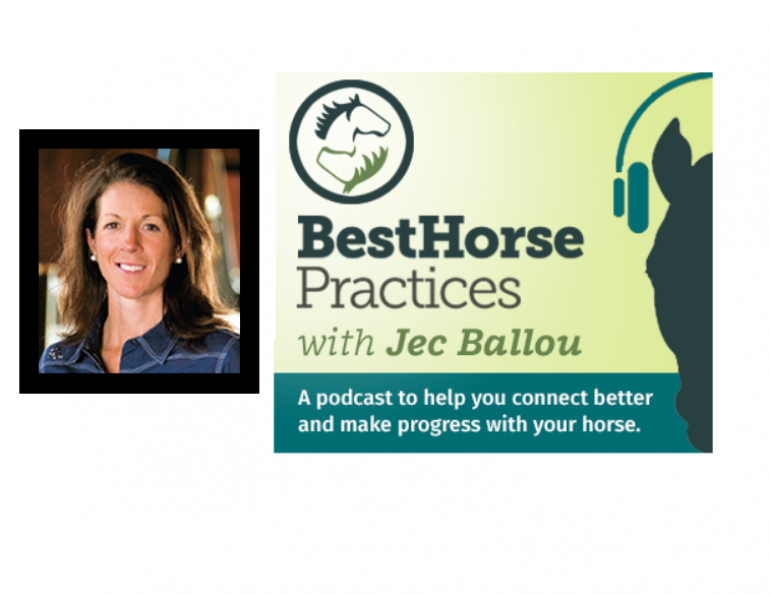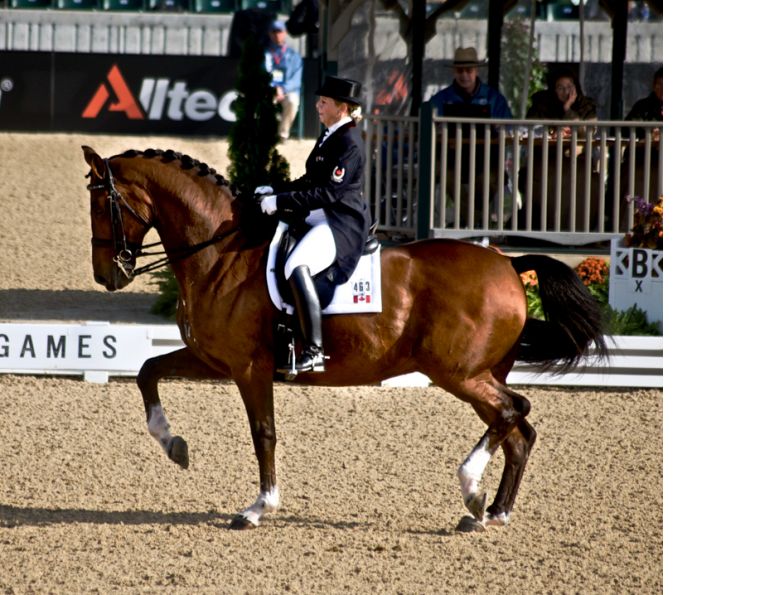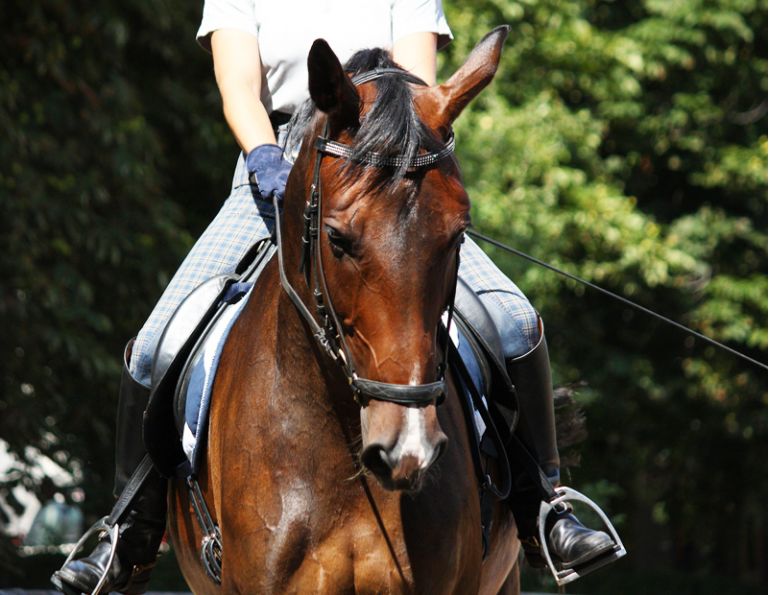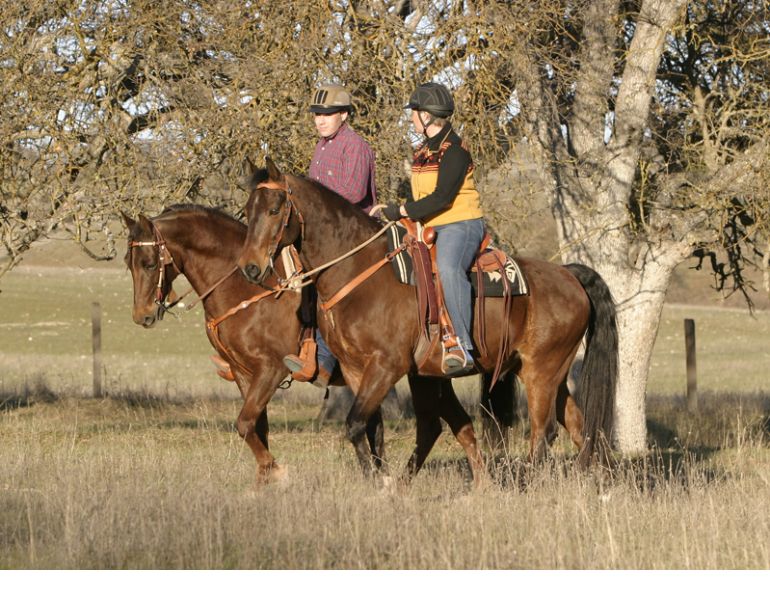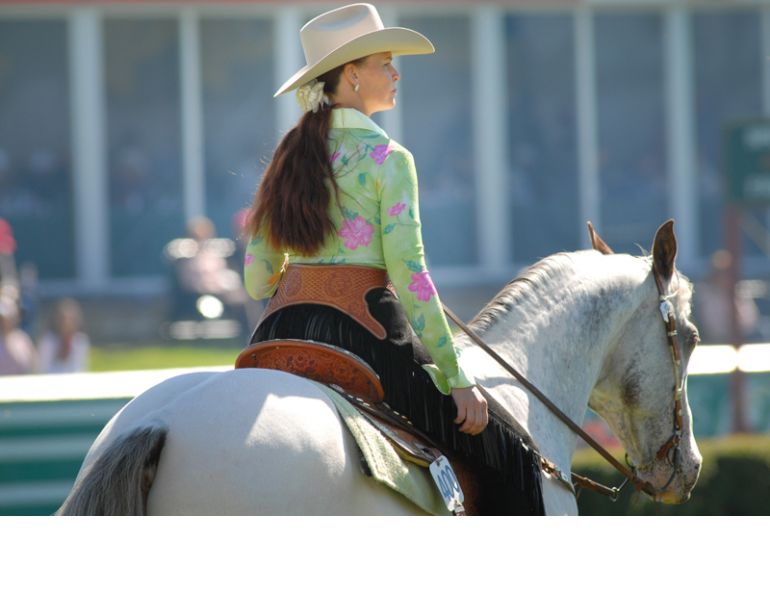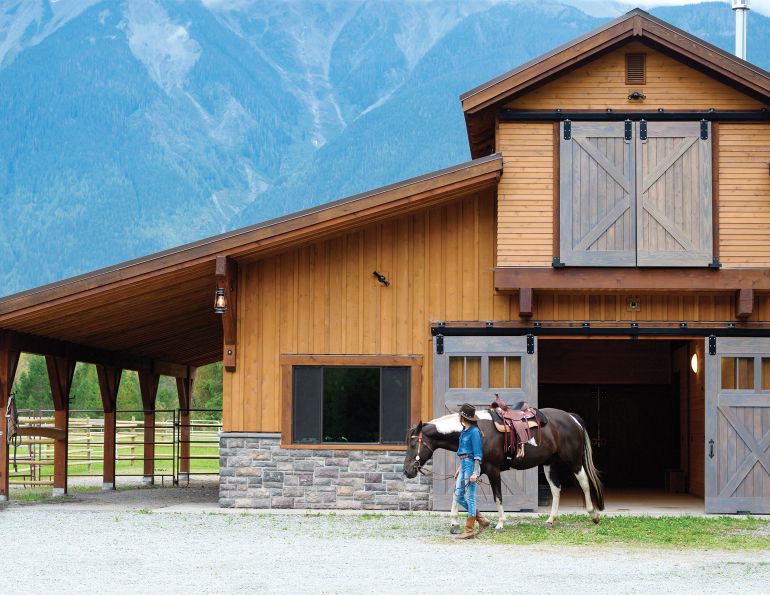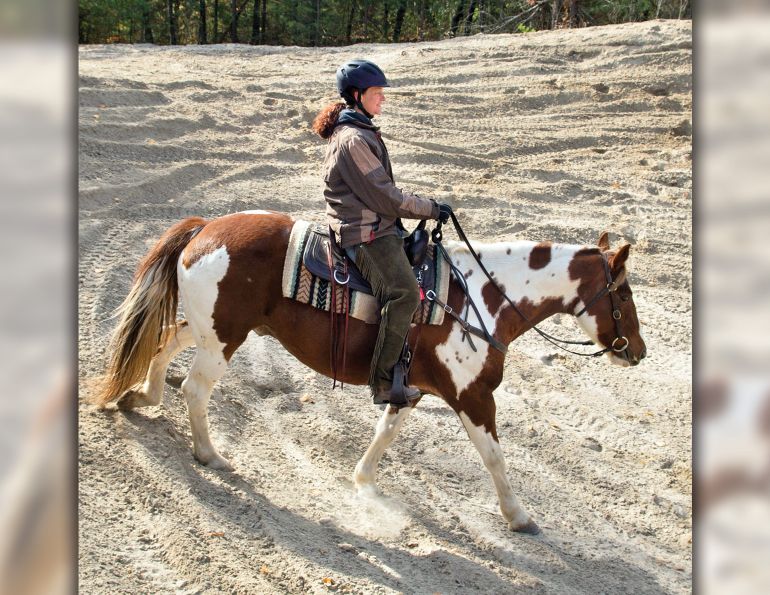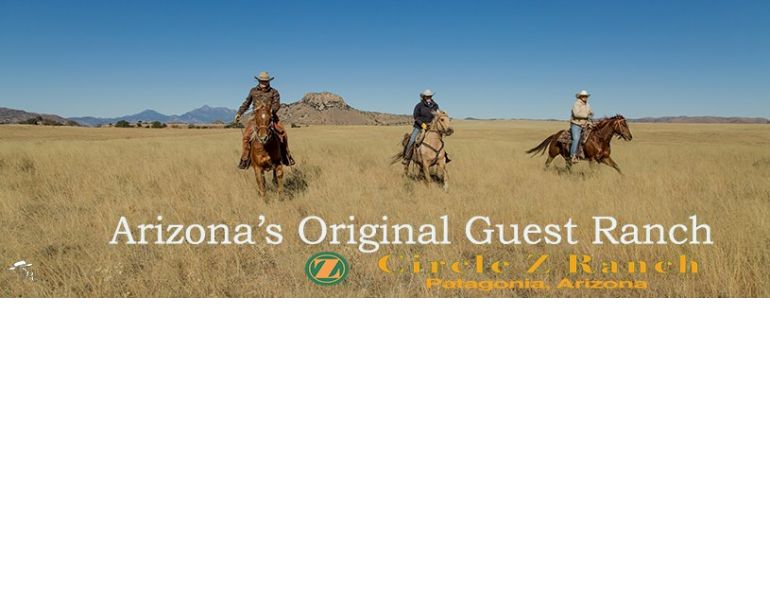By Jane Savoie
The secret to riding your dressage horse like a professional is to ride from half halt to half halt rather than from movement to movement. The half halt is your connective tissue between the dressage movements. They’re what make your ride or dressage test look like it flows seamlessly like a dance.
I rode with Olympian Robert Dover for many years. One of Robert’s favourite sayings is, “Amateurs ride from movement to movement. Professionals ride from half halt to half halt.” I think those are words to live by.
So when you think about your ride or start memorizing a dressage test for a horse show, don’t focus on the individual dressage movements such as, “I do a 10 meter circle here, and then I do a leg-yield there. After that, I do a lengthening across the diagonal.” If that’s what you do, your ride will look choppy and amateurish.
Instead, think, “Do a half halt to prepare for the turn from the centerline to the circle. Give another one to balance my horse before I start the leg yield. And give another one to coil the spring of the hind legs so my horse can ‘boing’ into the lengthening.”
Look at a test sheet and map out (in writing!) where you’re going to give your half halts. Every time you see any kind of transition, plan to give one. Think of them as the doorway through which you do every change of gait, movement, or bend. Without them, your ride will just look like a bunch of individual dressage movements strung together.
Also, keep in mind that transitions aren’t just from gait to gait. Transitions are ANY change. Those changes could be from a working gait to a lengthening and back again. Or from riding on a single track to starting a two-track movement like leg yielding or shoulder-in. Or changing from right bend to left bend on a serpentine.
Are you sick and tired of complicated and confusing training techniques? Are you frustrated by negative emotions like fear and lack of confidence? Would you like to be trained by a Three Time Olympic Coach? Learn how by going to: www.janesavoie.com or www.dressagementor.com.
Article Source: EzineArticles.com.
Photo: ©CanStockPhoto/Labrador



